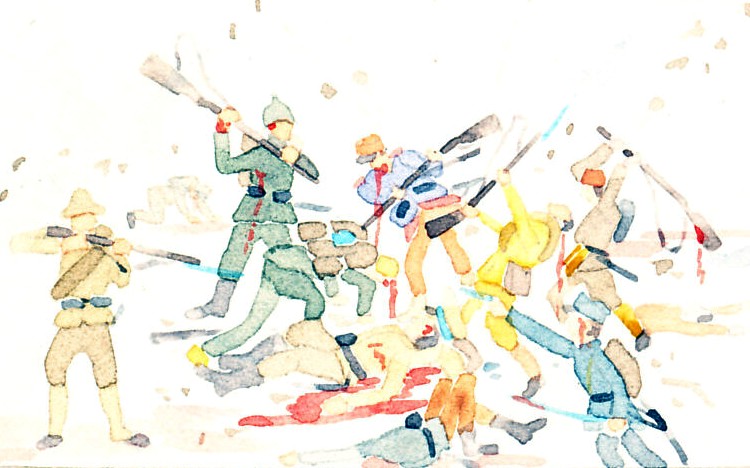The massive Iron Hindenburg in Berlin, its decorative scaffolding and cannons. One method to raise war funds was through nailings, charging for adding a nail to a wooden iron cross, statue or other object. Berlin was the site of this massive statue of General Paul von Hindenburg, hero of the Battle of Tannenberg. One could nail an iron, silver, or gold nail for 1, 5, or 100 marks respectively.

Der eiserne Hindenburg zu Berlin
Höhe: 13 Mtr. - Kopfhöhe: 1,35 Mtr. - Durchm.: 3,14 Mtr. - Größter Umfang: 9 Mtr. - Gewicht: 20000 Kg. Erlenholz und 7000 Kg. Eisen für die innere Konstruktion. - Zur Benagelung sind 6000 Kg. goldene, silberne u. eiserne Nägel bereitgestellt, zum Preise von 100, 5 u. 1 M. Man beachte unsere Feldgrauen bei der Nagelung, sie erscheinen wie übermütige Jungen im Arm des Vaters.
The Iron Hindenburg in Berlin
Height: 13 meters - Head Height: 1.35 meters - Dia. 3.14 meters - Greatest Extent: 9 meters - Weight: 20,000 Kg., 7,000 Kg. alder wood and iron for the inner construction. - 6,000 Kg. of gold, silver and iron nails are available for nailing, at the price of 100, 5 and 1 Mark. Note our troops in field gray who are nailing; they seem like wanton boys in their father's arm.
Reverse:
Dated and postmarked May 19, 1916 from Berlin.
Other views:
Larger, Larger, Back
